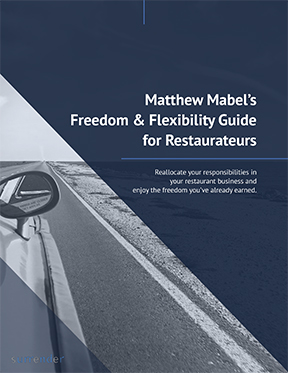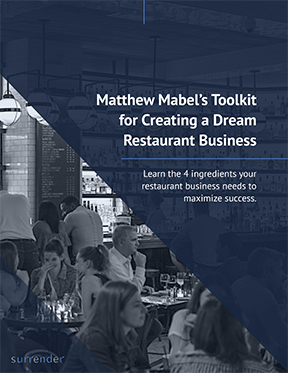April 11, 2014
Matthew Mabel
 Every day, restaurants have so much competition—from other restaurants, food trucks and even prepared food departments at grocery stores. To stand out in this competition, owners and managers must sure every guest has a positive experience, every day, on every shift.
Every day, restaurants have so much competition—from other restaurants, food trucks and even prepared food departments at grocery stores. To stand out in this competition, owners and managers must sure every guest has a positive experience, every day, on every shift.
By consistently achieving high standards, a restaurant will be able to build revenue through increased frequency of visits and word-of-mouth advocacy. This will generate positive guest comments on social media. It will build momentum for the further growth and expansion.
The key to consistent excellence is training. But traditional encyclopedic training documents—and their accompanying single-spaced tests—are as outmoded as the Yellow Pages. These days, people learn by using their phones and tablets, watching short bursts of video and reading bulleted instructions. If your training program and materials are more than a few years old, it is probably time for an update.
Converting outdated training practices to a more fun, dynamic and mobile-friendly format can help foster and uphold high standards while simultaneously inspiring, exciting and tapping into the talent of the staff.
This can be accomplished for a fraction of what a corporate training department would spend to design training methods and materials. Here are the five steps involved:
1. Construct an outline. Compile training points for each position in the restaurant. Go beyond current training materials and utilize the true experts: Collaborate with top performers at each position. Group those training points into three-minute bites of information and make a list of those major topics. The result is a menu of future videos the staff will use to learn standards and excel at their positions.
2. Assemble a team and timeline. It is important for these videos to be entertaining in addition to informative, so identify high-performing managers and crew who are natural “performers” in front of the camera. Think about who will best play the part of an exemplary employee when the lights go on. You’ll also need writers, editors, camera operators, performers and even voice-over talent. The people you choose will digitally capture your culture in addition to your standards. Establish a realistic and comfortable timeline for completing all the videos.
3. Create unique content. Buy an inexpensive video camera and have the team create three-minute videos and a short test for each installment. You can spend $200-$800 for your camera, but don’t bother spending more. You’ll also need video editing software, which is probably already on your computer and easy to use. Produce the most important video first and use that experience to learn how to make a video great. Don’t expect it to be perfect the first time. When creating the tests, include five or six bullet points and one piece of visual trivia, like, “What team’s ball cap was the prep person wearing?” to make sure viewers have paid attention.
4. Protect intellectual property. The videos you create are proprietary information, so you’ll want to protect them by restricting access to them in some way. Assemble them on a password-protected section of your website, your wiki site or private video sharing site. Also, check with your attorney about having your on-screen talent sign a release form letting you use their likeness.
5. Roll out and maintain training. Train new hires and retrain current team members on a schedule. Evaluate test data and mystery shopping data, if available, to measure consistency in your kitchen and dining room and the effectiveness of your videos. Reshoot where necessary. When you have updated standards, simply edit the relevant video.
Building up and maintaining a training program will help ensure guests are treated more consistently and up to standard. When that happens, the business will grow stronger and you will feel excited about all of your team members living your culture.
Matthew Mabel is President of Surrender Inc., a Dallas-based restaurant consulting and organizational development company he founded in 1991.

What’s the point of owning a successful restaurant business if you don’t have freedom?
Download Matthew Mabel's Freedom and Flexibility Guide for Restaurateurs to learn how to...
- Step away for extended periods of time
- Contribute to your community in a unique way
- Spend more time with friends and family
- Travel for weeks at a time
- Split your residence at a vacation home for several months a year

Want to grow your restaurant company past 3 units?
10 units?
20 units?
Enter your email address below to get our newsletter and the free guide to pushing through expansion barriers and mastering unit growth.

What would you rather own?
A good restaurant company?
Or one of the best restaurant companies in the world?
Enter your email address below to get our newsletter and the free toolkit to learn the 4 ingredients your restaurant business needs to maximize success.

Want to get the most enjoyment from the success you’ve worked so hard for?
Want to maximize your net worth in addition to your lifestyle?
Enter your email address below to get our newsletter and the free guide to learn how to bring experienced senior management into your company.
